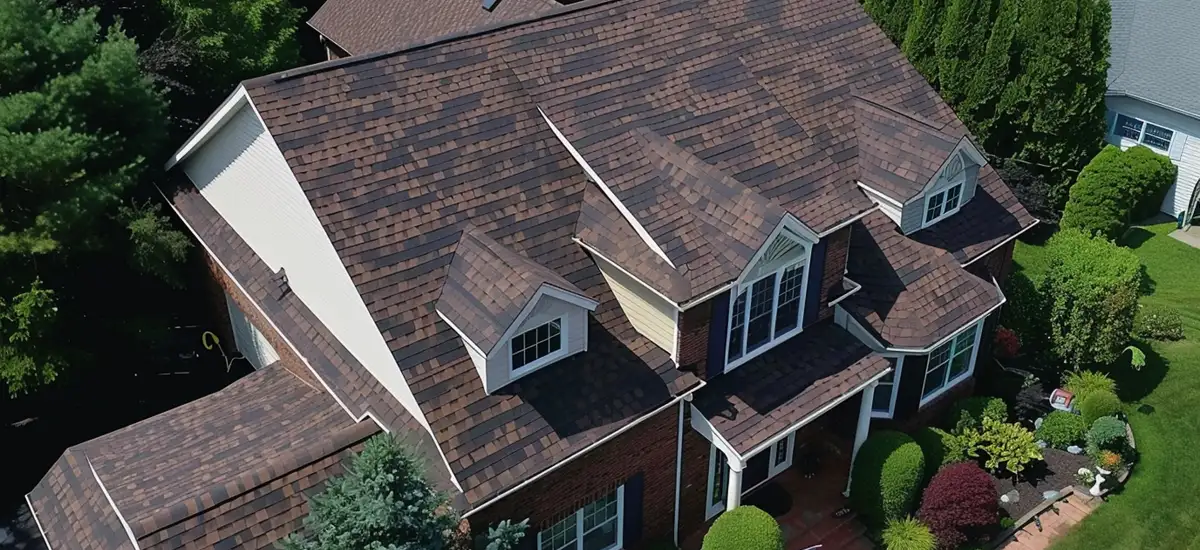Proper roof ventilation is one of the most important factors in extending the life of your roof, yet it is often neglected by homeowners. In Blue Springs, Missouri, where the weather can be unpredictable and severe, the need for ventilation is even more critical. Adequate roof ventilation helps to regulate attic temperature, prevent moisture buildup, and protect your home from costly damage. If you’re considering Roof Repair, Roof Replacement, or Roof Installation for your home, understanding how roof ventilation works can help you make the best decisions for long-term durability and energy savings.
What is Roof Ventilation and How Does it Work?
Roof ventilation allows your attic to “breathe” by providing a way for hot air and moisture to escape, while cooler, drier air enters. A well-ventilated roof includes intake vents (usually located at the soffits) and exhaust vents (typically near the roof’s peak). This creates a continuous flow of air through the attic space, reducing heat and moisture that could otherwise cause structural damage or lead to premature roof aging.
Without adequate ventilation, the buildup of heat and moisture can wreak havoc on your roof. This is especially important in Blue Springs, Missouri, where the climate ranges from hot, humid summers to freezing winters. Both extremes can take a toll on your roof, making proper ventilation a key factor in maintaining the longevity of your roofing system.
Why Ventilation is Essential for Blue Springs Roofs
Surviving the Summer Heat
Summers in Blue Springs can be scorching, with high humidity and temperatures often reaching well into the 90s. Without proper roof ventilation, hot air can accumulate in your attic, causing temperatures to soar. This excessive heat can have several negative effects on your roof and home:
- Shingle Damage: Asphalt shingles, commonly used in Missouri homes, can blister and deteriorate when exposed to excessive heat from both the sun and trapped attic air. This can lead to cracks and leaks, reducing the lifespan of your roof.
- Higher Energy Bills: When heat builds up in the attic, it can increase the temperature inside your home, causing your air conditioning to work overtime. Good ventilation helps keep your attic cool, lowering energy consumption.
- Moisture and Mold: Humid summer air can lead to moisture buildup in your attic if it is not properly vented. This moisture can seep into wood beams and insulation, creating the perfect conditions for mold and mildew to thrive.
If you’re noticing higher energy bills or mold issues, it may be time to consider Roof Repair or even an inspection to assess your ventilation system.
Preventing Winter Ice Dams
Winter in Blue Springs comes with its own set of challenges. Ice dams, which form when snow melts and refreezes at the roof’s edge, can cause significant damage if not prevented. Proper roof ventilation helps keep your attic temperature stable, preventing warm air from melting snow unevenly and leading to ice buildup.
Without ventilation, heat from your home rises into the attic, warming the roof and causing snow to melt. When the melted water reaches the cooler edge of the roof, it refreezes and creates an ice dam. Water trapped behind the dam can back up under shingles, resulting in leaks and damage to both the roof and interior ceilings.
For homeowners dealing with winter roofing issues, addressing ventilation can prevent future problems. You may also want to schedule a Roof Replacement or Storm Damage Roof Repair after harsh winter storms.
Benefits of Proper Roof Ventilation
When your roof is properly ventilated, it does more than just protect your shingles. It can improve the overall efficiency of your home and even save you money in the long run. Here are some of the top benefits:
Extends Roof Lifespan
One of the most significant advantages of proper roof ventilation is its ability to extend the life of your roof. When heat and moisture are allowed to escape, your shingles and roofing materials are less likely to deteriorate. In areas like Blue Springs, where temperatures fluctuate, a ventilated roof ensures that the materials endure less stress from the weather.
Reduces Energy Costs
Ventilation helps regulate the temperature in your attic, reducing the strain on your heating and cooling systems. A well-ventilated attic stays cooler in the summer and warmer in the winter, meaning your HVAC system doesn’t have to work as hard to maintain a comfortable temperature in your home. This leads to lower energy bills year-round.
Prevents Moisture Damage
Excess moisture trapped in the attic can lead to wood rot, mold growth, and compromised insulation. With proper ventilation, moisture can escape before it has a chance to cause damage. This is particularly important in the humid climate of Missouri, where moisture buildup can be a frequent issue for homeowners.
If you’ve noticed any signs of moisture damage, such as mold growth or peeling paint, it may be time to consult with a professional for Roof Repair or Roof Installation to fix your ventilation issues.
Signs Your Roof May Need Better Ventilation
Recognizing the warning signs of poor ventilation can save you from costly repairs in the future. Here are a few signs that your roof may not be properly ventilated:
- Hot Attic: If your attic feels excessively hot during the summer, even when outside temperatures are moderate, this could be a sign of poor ventilation.
- Visible Mold or Mildew: If you see or smell mold in your attic, it’s likely due to trapped moisture, which could indicate a ventilation issue.
- Peeling Paint: Paint peeling or blistering on your ceiling or near the roofline could indicate excess moisture accumulating in the attic.
- Ice Dams in Winter: If you experience frequent ice dams during winter, it’s a strong sign that your attic is not ventilating properly.
If you notice any of these issues, it’s important to contact Top Peaks Roofing and Construction for a professional assessment. Whether you need a minor Roof Repair or a complete Roof Replacement, our team is experienced in handling ventilation issues for homes in Blue Springs.
How Top Peaks Roofing Ensures Proper Ventilation
At Top Peaks Roofing and Construction, we understand how critical proper roof ventilation is to your home’s long-term health and energy efficiency. When we perform a Roof Installation or Roof Replacement, we ensure that your ventilation system is set up correctly to handle the unique demands of Missouri’s climate. Our roofing experts carefully assess your home’s ventilation needs, installing the appropriate combination of intake and exhaust vents to provide optimal airflow.
If you’re unsure whether your current roof is adequately ventilated, we offer comprehensive inspections to determine if there are any deficiencies in your system. We also specialize in Storm Damage Roof Repair for roofs impacted by Missouri’s severe weather.
Conclusion
Roof ventilation is an often-overlooked aspect of roofing that can have a significant impact on your roof’s lifespan, your home’s energy efficiency, and your overall comfort. For homeowners in Blue Springs, Missouri, where the climate can vary drastically, proper ventilation is essential to avoid premature roof deterioration, high energy bills, and moisture-related damage.
At Top Peaks Roofing and Construction, we are dedicated to helping you get the most out of your roof. Whether you need a new Roof Installation, Roof Repair, or help with Storm Damage Roof Repair, we’re here to ensure your home remains protected and energy-efficient for years to come. Contact us today to schedule an inspection or learn more about our roofing services.





